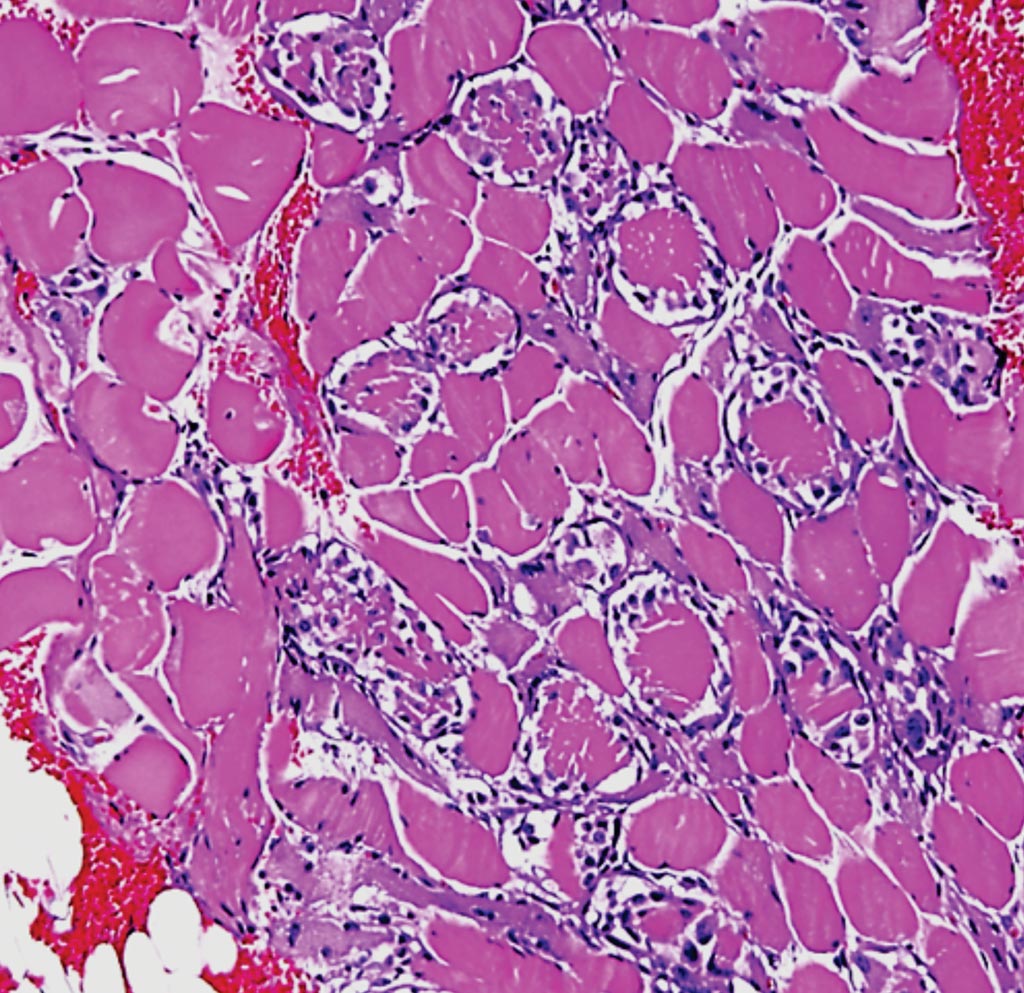Febrile Rhabdomyolysis Diagnosed in West African Refugees
By LabMedica International staff writers
Posted on 13 Sep 2017
Rhabdomyolysis is a complex medical condition involving the rapid breakdown of damaged skeletal muscle. The severity of the illness ranges from asymptomatic elevations of serum creatine phosphokinase (CPK) to life-threatening diseases such as cardiac arrhythmia, acute renal failure, and even death.Posted on 13 Sep 2017
There were 153,842 people who arrived directly in Italy via the sea in 2015 and 181,436 people in 2016, mainly coming from Nigeria, Eritrea, Guinea, Ivory Coast, Gambia, Senegal, Mali, and Sudan. An increasing number of cases of febrile rhabdomyolysis have been observed in these migrants since May 2014, and so far there has been no specific etiological diagnosis.

Image: A histopathology of rhabdomyolysis, a myonecrosis on a massive scale with leakage of myofiber contents, including myoglobin, creatine phosphokinase, and other proteins into the circulation (Photo courtesy of Dr. Dimitri P. Agamanolis, MD).
Scientists at the University of Brescia and Spedali Civili General Hospital (Brescia, Italy) and their associates performed a multicenter retrospective observational study of cases of febrile rhabdomyolysis reported from May 2014 to December 2016 in 12 Italian centers: nine infectious diseases and tropical medicine units, two internal medicine units, and one refugee center. A total of 48 cases were identified; 43 were male (89.6%), and their mean age was 22.4 ± 5.8 years. Febrile rhabdomyolysis was defined as an increase in creatine phosphokinase levels (≥1000 IU/L) associated with myalgia and fever (>38 °C). They all came from West Africa, mainly from Nigeria (58.3%). All patients were hospitalized with fever and very intense muscle aches. Creatine phosphokinase, aspartate aminotransferase, and lactate dehydrogenase values were abnormal in all cases.
The rhabdomyolysis was ascribed by the treating physicians to an infective agent in 16 (33.3%) cases. In detail, Epstein–Barr virus (EBV) DNA was detected in eight of 32 patients tested, immunoglobulin M (IgM) for coxsackievirus was detected in five of 27 cases tested, and IgM for cytomegalovirus was identified in three of 29 cases tested. The etiology was undefined in the remaining cases. The most frequent infectious causes of rhabdomyolysis were excluded. Four out of seven patients who were tested for abnormal hemoglobin had sickle cell trait (SCT) and one patient had hemophilia A.
The authors concluded that the long incubation period from when the refugees left Libya and arrived in Italy does not support a mechanical cause of rhabdomyolysis. Furthermore, viral infections such as those caused by coxsackievirus are rarely associated with such a severe clinical presentation. They hypothesized that other predisposing conditions like genetic factors, unknown infections, or unreported non-conventional remedies may be involved. Therefore targeted surveillance of rhabdomyolysis cases is warranted. The study was published online on July 26, 2017, in the International Journal of Infectious Diseases.
Related Links:
Spedali Civili General Hospital














